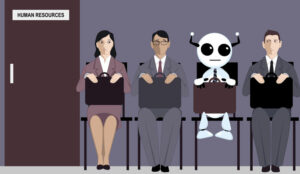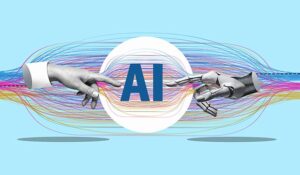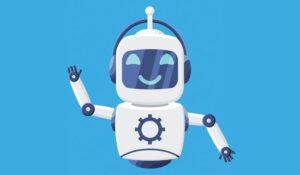As AI expands into and improves every aspect of customer service, you’ll hear about growing concerns that it will completely replace human agents in contact centres. But, for a variety of reasons, an AI-powered contact centre will never replace human agents.
However, it can make your contact centre agents better by taking tedious tasks away.
Despite fears about mass unemployment in the wake of universal AI adoption, contact centres will always need the human touch. AI still doesn’t have the nuanced emotional understanding that most customers would expect from a human contact centre agent.
AI does not demonstrate the ability to adapt to our evolving language and shifting zeitgeist. Thus, it lacks the capabilities to utilize popular lingo and display the sensitivity necessary to put customers at ease. This shortcoming can present a problem for your company when it comes to customer retention.
Although AI won’t usurp a contact centre agent’s role anytime soon, a perfect harmony between humans and AI can exist. In many ways, AI will help your employees’ production and efficiency. AI can handle repetitive tasks and track customer interactions to tailor the experience of future engagement.
In short, an AI-powered contact centre is the future.
Why AI Will Never Replace Contact Centre Agents
Unless some unforeseen leap forward in artificial intelligence occurs, millions of contact centre representatives’ jobs remain safe. A completely AI-powered contact centre does not have the capabilities to complete every task necessary to run a business.
While you can set up a multilingual VA operation, AI doesn’t always express emotion, tell jokes, or use modern slang well enough to create a rich customer service experience. Let’s go over some of these factors in more detail.
1. AI Doesn’t Express Emotion Well
For all of the advancements in AI technology, artificial intelligence doesn’t express emotion well. And, when it does, the delayed responses break the spell of what otherwise might seem like a human interaction.
Many variables go into a human conversation, like timing, intonation, volume, speed, and countless others. No computer program can account for it all, though progress is constant.
Nobody likes fake apologies, false promises, empty condolences, or insincere compliments. And, no matter how many lines of code go into AI, emotional responses can sound phony. The key is implementing AI in lower-stakes situations to help promote retention and ease of use for your product or service.
Then, when situations escalate, a human can take over the resolution for your customer. But it’s easy to see where a division of responsibility between AI and customer service agents means progress and better use of company time than cutting AI out of the equation entirely.
2. Many Customers Still Prefer Human Interaction
An AI-powered contact centre will never replace human representatives because many customers prefer dealing with a human. While some people might feel inclined to say that this only applies to older customers, it does not.
We’ve all felt the frustration of speaking to AI and experiencing a miscommunication that leads to erroneous call forwarding or a hang-up. Customers that call into a contact centre want to feel understood. Angering a customer when they need help represents the last thing a business owner wants.
This is another reason why understanding your consumers’ behavior is instrumental in developing AI tools. The proper progression of service or offers can make the difference between making a sale and losing a customer for good.
Sometimes, customer service calls require a human touch, whether you factor it into the AI program or combine the two in practice.
But on the flip side, plenty of consumers prefer automated customer service because they can get what they want without the niceties. It’s easier — and sometimes even fun — to be short or even downright rude to an AI bot. After all, there’s no consequence, and the consumer still gets what they need from the transaction.
The bottom line is that flexibility is essential; keeping human agents and AI hires on hand is a smart strategy for ensuring your contact centre runs smoothly.
3. AI Is Always One Step Behind the Current Lingo
Language evolves faster now than it ever has. Pop culture and the various subcultures frequently come up with new words and phrases all the time. Plus, new usages of slang diverge based on geography and branch out from there.
No AI system can account for novel phrases that just went viral yesterday. AI is always one step behind the way humans speak, even though newer tech means it’s catching up faster.
If you run a contact centre, you receive calls from all over the country and even the world. Customers that speak casually and use language developed within their geographical region, professions, and private associations create difficulties in AI’s comprehension.
Machines are learning, but the best AI offerings are always a work in progress. Fortunately, AI tech is keeping up with trends surprisingly well – just ask Alexa what she thinks.
How AI Can Improve the Performance of Contact Centres
Now that we’ve covered some of the reasons AI will not replace contact centre agents, let’s discuss how AI and employees can work together. AI can gather data on client interaction, identify training lapses, handle repetitive tasks, and help your team reproduce successful work behaviors.
1. AI Can Gather Data on Customer Interactions
An AI-powered contact centre offers additional tools to analyze the performance of your employees when dealing with customers. Artificial intelligence demonstrates the ability to record phone calls, document outcomes, and provide users with data to help an employer decipher what went wrong or why a particular employee enjoys heightened success.
In short, AI turns the art of a sales call or customer service interaction into a science. What once seemed like an amorphous phenomenon that defies measurement now appears more like a system with quantifiable and verifiable data.
In this sense, AI can pierce the veil of human interactions and assign a label or rating to a predefined set of performance-related tasks.
2. AI Can Identify Training Lapses
For businesses that maintain an expansive, systematic protocol, the cost of adequate training skyrockets.
All of those little steps, processes, and tasks that employees must work through can prove challenging to remember. Once a contact centre representative settles in and gets comfortable, the possibility of proficiency loss increases, too.
Artificial intelligence can identify, record and report missed steps in your sales or customer service process so you can pinpoint what type of retraining an employee may require. In the past, managers had to hover over or listen in on service reps’ calls to harvest this information. Now, the data will come to you thanks to AI.
3. AI Can Handle Repetitive Inquiries
Boredom caused by repetition represents one of the most common reasons for high turnover rates in contact centres. Many employees spend time answering the same questions over and over again. Others tire of the various physical tasks that they must perform dozens of times per day.
This dynamic presents a significant opportunity for artificial intelligence to step in and take over.
Depending on your business operations’ complexity, most of the calls received relate to just a handful of inquiries. Maybe customers want to know how to make a payment. Perhaps others wish to schedule maintenance. AI can handle most frequently asked questions without the need for human-to-human contact.
The allotment of different tasks to your AI team versus the human one means that the live customer service agents can focus on other areas of the business. Automation is crucial in many industries, and customer service is catching on to its value in theirs.
4. AI Can Help Your Team Reproduce Past Successful Techniques
The performance of employees working for large contact centres can sometimes follow the bell curve. At either end, you have the overachievers and the underachievers. When it comes to overachievers, it can be challenging to determine that magic formula for success.
One question continues to linger for managers while evaluating top performers: How’d they do that? Well, AI can tell you exactly how they did that.
Through data collection, analysis, and reporting, artificial intelligence can explain why that one employee closes 25% more deals than everyone else within the same timeframe. Certain successful behaviors and modes of speech will emerge through millions of computer processes completed in just a matter of seconds. Then, teach these techniques to other employees.
What the Future Holds: Humans vs. AI
In the distant future, the fusion of AI and robotics may replicate the performance of contact centre representatives.
For now, we remain unaware of any AI-powered robots capable of processing customer inquiries, responding in a sensitive, human-like way, and carrying out the physical tasks required to address customer concerns.
If your contact centre intends to invest in AI technology, you should feel confident knowing that the industry has yet to progress far enough to replace human agents.
In the meantime, human agents and AI can form mutually supportive relationships to improve the efficiency, effectiveness, and success rate of contact centres worldwide.
Author: Guest Author
Published On: 15th Feb 2022
Read more about - Guest Blogs, Cognigy















